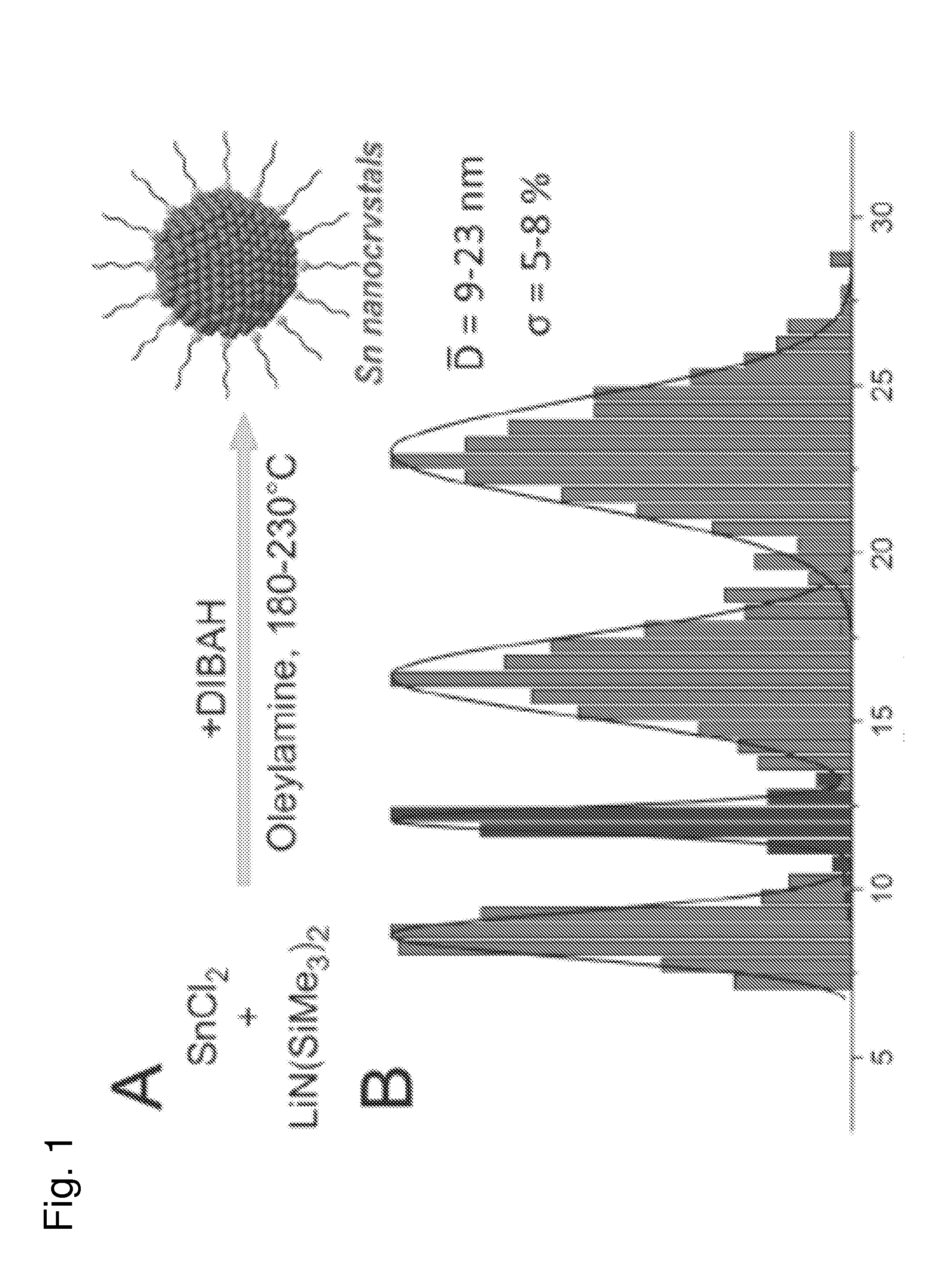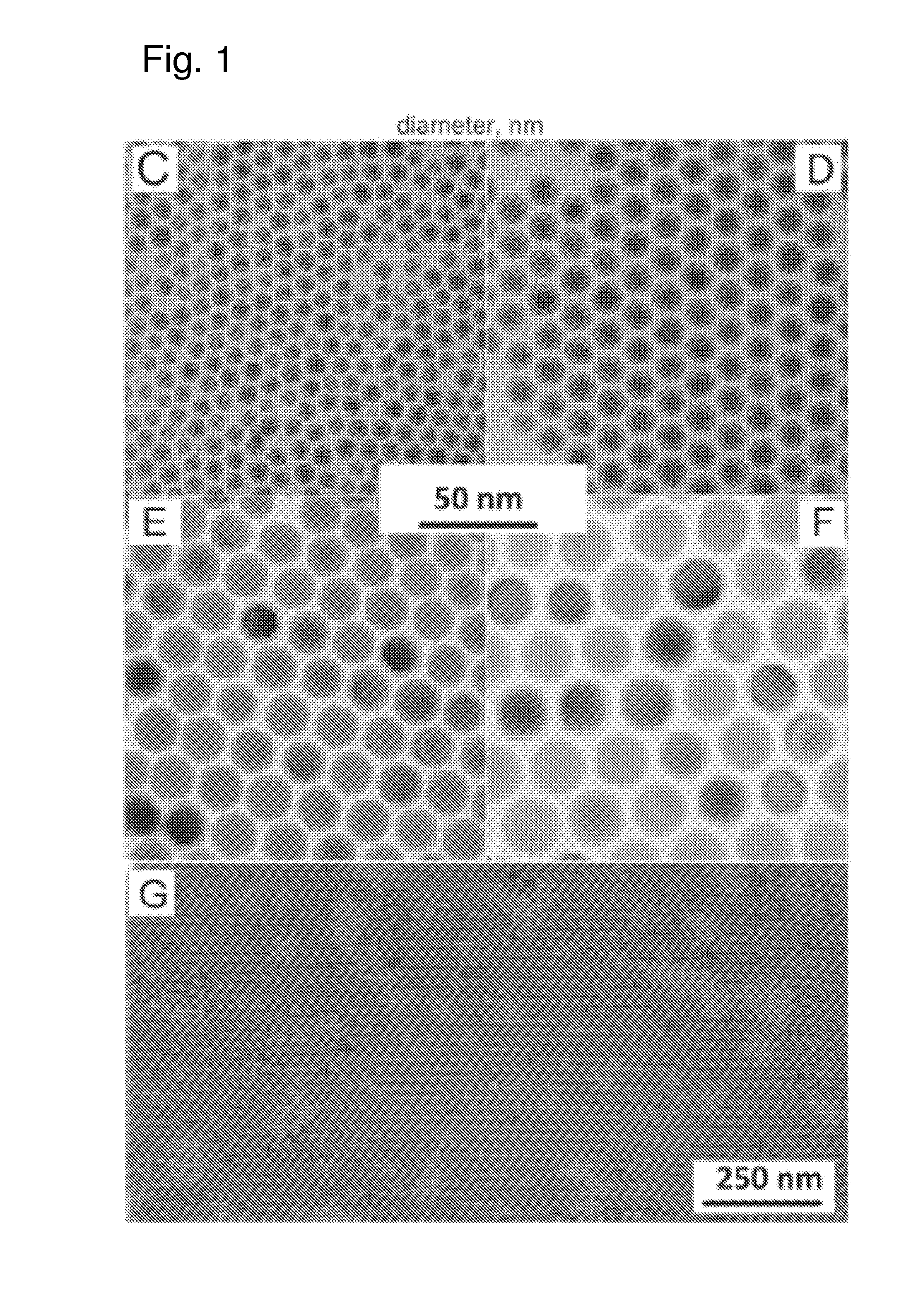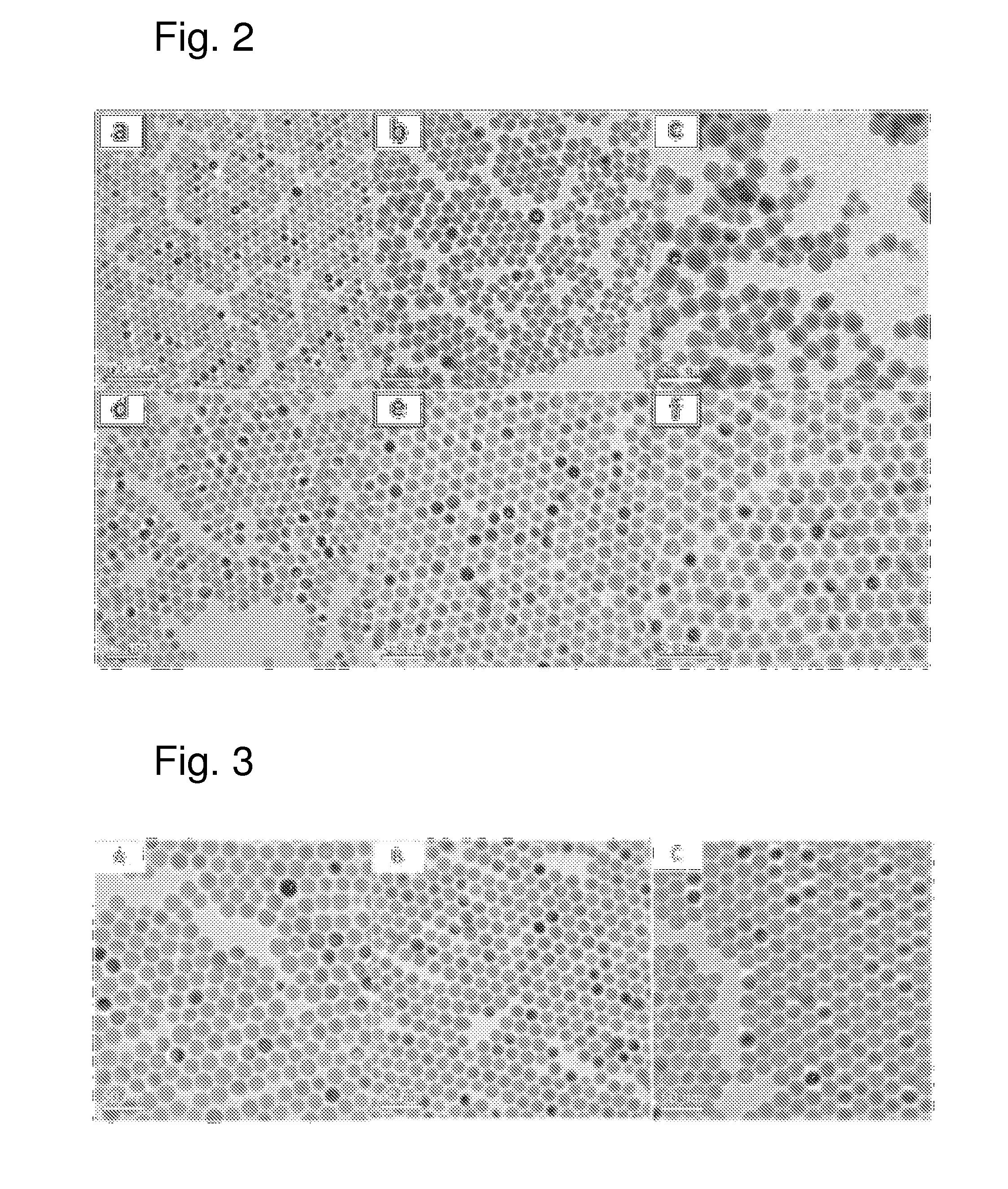Tin based anode material for a rechargeable battery and preparation method
a rechargeable battery and anode material technology, applied in the direction of non-aqueous electrolyte accumulator electrodes, electrical equipment, electrochemical generators, etc., can solve the problems of severe capacity loss, alloy anode, and abrupt capacity loss, and achieve the effect of better control of nanoparticular tin species
- Summary
- Abstract
- Description
- Claims
- Application Information
AI Technical Summary
Benefits of technology
Problems solved by technology
Method used
Image
Examples
Embodiment Construction
[0053]In the following description of exemplary embodiments, any statements relating to possible explanations or interpretations of observations and results shall not be construed as binding the invention to a particular theory.
1. Monodisperse and Inorganically Capped Sn and Sn / SnO2 Nanocrystals for High Performance Na-Ion and Li-Ion Battery Anodes
1.1 Introduction
[0054]This work was driven by two goals: (i) to develop convenient syntheses of colloidal, sub-20 nm Tin (Sn) nanocrystals (NCs) with precise control over the size and composition and (ii) to study the utility of such materials as active anode materials in rechargeable Li-ion batteries (LIBs). In particular, finely tunable morphologies and optimal surface chemistries in nanoscale regime (2-20 nm) on the Li-insertion properties are considered central for achieving high charge / discharge cycling stabilities in the next generation of Li-alloying, high-capacity anode materials such as Sn, Ge and Si [1]. Further, the potential us...
PUM
| Property | Measurement | Unit |
|---|---|---|
| size | aaaaa | aaaaa |
| size | aaaaa | aaaaa |
| size | aaaaa | aaaaa |
Abstract
Description
Claims
Application Information
 Login to View More
Login to View More - R&D
- Intellectual Property
- Life Sciences
- Materials
- Tech Scout
- Unparalleled Data Quality
- Higher Quality Content
- 60% Fewer Hallucinations
Browse by: Latest US Patents, China's latest patents, Technical Efficacy Thesaurus, Application Domain, Technology Topic, Popular Technical Reports.
© 2025 PatSnap. All rights reserved.Legal|Privacy policy|Modern Slavery Act Transparency Statement|Sitemap|About US| Contact US: help@patsnap.com



